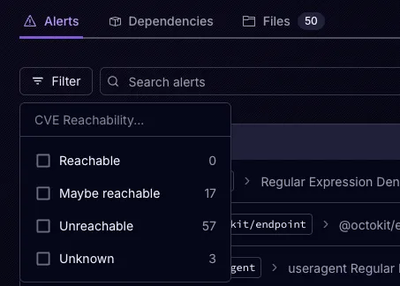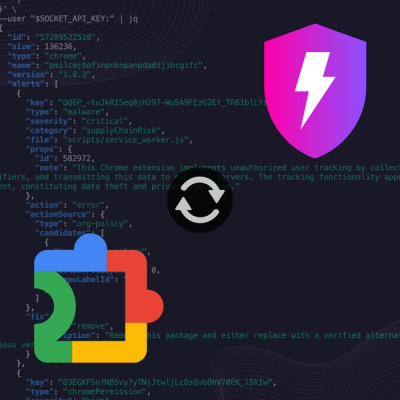
Product
Introducing Rust Support in Socket
Socket now supports Rust and Cargo, offering package search for all users and experimental SBOM generation for enterprise projects.
interactive-video-player
Advanced tools
An interactive video player framework to create engaging animations and experiences by combining different video clips. Automatically adjusts video quality based on internet speed, handles buffering efficiently, and works seamlessly across all browsers. I
The Interactive Video Animation Player is a powerful library designed to create interactive video animations by seamlessly stitching together different video clips. This repository allows you to combine multiple video files into a cohesive animation or interactive game. It works across all major browsers, features caching to reduce buffering, and adjusts the video quality based on the user's internet speed.
With just one click, you can create an interactive game, control video playback, and even display dynamic video flows with interactive buttons. The player will automatically select a lower video quality if the internet speed is slow to ensure smooth playback, making it ideal for a wide range of users with varying network conditions.
Clone the repository:
git clone https://github.com/fix2015/interactive-video-player.git
Navigate to the project folder:
cd interactive-video-player
Install the dependencies using npm:
npm install
Run the project:
npm start
The project uses a config.json file for configuration, which allows you to define video content, internet speed testing, and the video flow sequence. Below are the key configuration settings:
The config.json file contains the following settings:
"INTRO"The VIDEO section contains video files for each flow. A flow represents a sequence of videos (e.g., intro videos, game sequences, etc.) that are played in a defined order. You can configure multiple video files for each flow with URLs for each quality (low and high).
Example:
{
"VIDEO": {
"INTRO": [
{
"link_low": "video/intro_low.mp4",
"link": "video/intro_high.mp4",
"poster": "images/intro_poster.jpg",
"order": 1
},
{
"link_low": "video/intro_part2_low.mp4",
"link": "video/intro_part2_high.mp4",
"poster": "images/intro_part2_poster.jpg",
"order": 2
}
]
}
}
The testSpeedLink is a URL to a small video file used for testing the user's internet speed. The player uses this URL to determine whether to serve a low-quality or high-quality video based on the detected speed.
Example:
{
"testSpeedLink": "https://example.com/test-speed-video.mp4"
}
The startFlow setting defines the initial flow that starts playing when the video player is initialized. You can set this to any of the available video flow names.
Example:
{
"startFlow": "INTRO"
}
Initialize the Video Player
Once you've configured the config.json file, initialize the video player by passing the configuration and a wrapper element for the player:
const wrapper = document.body;
const videoPlayer = new VideoPlayer(wrapper, config);
Control Video Playback
You can interact with the video player through various methods like:
Play a Video:
videoPlayer.playVideo(index); // Plays the video at the specified index
Load and Play the Next Video:
videoPlayer.handleVideoEnd(); // Moves to the next video in the sequence
Generate Flow Buttons
For interactive game or branching scenarios, generate flow buttons that allow the user to navigate between different video flows:
videoPlayer.flowButtonGenerator.generate();
A powerful feature of this library is the ability to generate posters for your video files automatically. This ensures that users do not encounter any blinking or white screens between videos, as the poster is pre-generated from the first frame of each video.
If you'd like to generate posters, you can use a separate repository called generate_poster, which provides a simple Bash script to automatically extract the first frame from each video and save it as a poster image.
Clone the generate_poster Repository
First, clone the generate_poster repository:
git clone https://github.com/fix2015/generate_poster.git
Navigate to the Project Folder
After cloning, navigate to the generate_poster project folder:
cd generate_poster
Run the Script to Generate Posters
The repository contains a Bash script (generate_poster.sh) that will automatically extract the first frame from each .mp4 video in the directory and save it as a .jpg image. Run the script with:
bash generate_poster.sh
This script will find all .mp4 video files in the current folder, extract the first frame from each, and save it as a .jpg file with the same name as the video (e.g., video.mp4 will generate video_poster.jpg).
ffmpeg to extract the first frame of each .mp4 video..jpg image in the same folder as the video, with the _poster suffix added to the filename.MIT License
FAQs
An interactive video player framework to create engaging animations and experiences by combining different video clips. Automatically adjusts video quality based on internet speed, handles buffering efficiently, and works seamlessly across all browsers. I
The npm package interactive-video-player receives a total of 0 weekly downloads. As such, interactive-video-player popularity was classified as not popular.
We found that interactive-video-player demonstrated a healthy version release cadence and project activity because the last version was released less than a year ago. It has 0 open source maintainers collaborating on the project.
Did you know?

Socket for GitHub automatically highlights issues in each pull request and monitors the health of all your open source dependencies. Discover the contents of your packages and block harmful activity before you install or update your dependencies.

Product
Socket now supports Rust and Cargo, offering package search for all users and experimental SBOM generation for enterprise projects.

Product
Socket’s precomputed reachability slashes false positives by flagging up to 80% of vulnerabilities as irrelevant, with no setup and instant results.

Product
Socket is launching experimental protection for Chrome extensions, scanning for malware and risky permissions to prevent silent supply chain attacks.